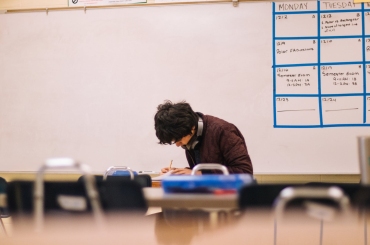This blog post may contain references to products or services from one or more of our advertisers or partners. We may receive compensation when you click on links to those products or services.
Those kids who generally take a little longer to grasp a concept require a bit more attention from the teacher. They may fail their tests and feel irritated if they are not provided the attention they require. One-on-one training guarantees that each student engages with the teacher on an individual basis, allowing them to study and comprehend subjects at their speed and with their style.
Students may learn quicker, grasp more information, recall their course work, and enjoy studying with online school’s one-on-one teacher interactions. Students who have one-on-one learning connections have more command over their learning, dare to convey everything they need, and obtain the customized attention they need to achieve great results.
Provides a broader range of learning
This benefit is about broadening one’s knowledge to include a variety of subjects. While we’ve all had to learn various forms of chemistry and have certainly struggled a bit, there are several types of instructors out there who can provide you with the right kind of chemistry help you need. A student who wants to learn to write, for example, can find an online creative writing teacher, while another can get assistance with things like creating a website.
This isn’t just a tutoring advantage. There is a range of opportunities available for people intrigued in engaging in something not normally taught in school, from youth camps to after-school activities and various forms of online learning.
Personalization
When compared to small group tutoring, one-on-one tutoring offers the advantage of being able to customize the sessions. In a small group, students are likely to be struggling with a range of subjects/topics, which indicates at least one student isn’t getting all of the aid they require.
By one-on-one tutoring, the tutors can talk to the student about their problems and construct classes to address those issues. This allows the individual to focus on the issues in which they are having difficulty rather than receiving general tutoring that may or may not be effective.
Low-stress surroundings
You’ll notice that students who are studying in a stressed atmosphere can perform badly. Students start trusting their professors and are given a totally safe space to openly communicate their difficulties through one-on-one interactions.
Many kids are afraid of being labeled a “nerd” if they give answers in a school setting with their peers. Others are hesitant to take the types of risk that lead to greater knowledge because they are afraid to make mistakes and be humiliated in front of their classmates or teachers. One-on-one instruction, on the other hand, allows the student to speak freely to the tutor and receive the assistance and attention they require.
Better communication style
One-on-one conversations provide numerous possibilities for the learner to hone their interpersonal communication skills. The instructor can adjust to the student’s communication style and provide just enough “wait time” after posing questions so the student can analyze the issue and respond thoughtfully.
Students in one-on-one classes do not have to decipher the communications their instructor sends them. They don’t even have to decide how to respond to the tutor, and they can practice or request additional clarity if their comments aren’t exactly on target. With one-to-one teaching, communication and idea-sharing are centered on the learner.
Increases accountability
For example, a teacher’s metrics of accountability with their students primarily include homework, participation, and tests. If a student fails to complete homework on time, it may go unnoticed until it’s a routine. As for involvement, a student may or may not need to do anything to earn points. Exams can help with the responsibility aspect of learning but they only happen once in a while.
Tutoring, on the other hand, usually involves a student working one-on-one with a trained person who is instructing and challenging them. Students often feel more inclined to perform in such a setting. They also feel empowered and hold themselves accountable.
Final thoughts
One-on-one learning sessions with a tutor may seem scary at first, but if you decide that this type of learning is the best for you, it may change the way you look at studying as a whole. When you take your first class with a tutor you will realize how much more you learned during the session because of the direct attention the tutor pointed at you.
No matter if you have a question about the material you need help with or you want to learn a new skill, one-on-one tutoring will definitely feel better than in a classroom setting. You’ll be able to learn more, feel more comfortable after some time, if you have problems with relaxing, and have someone adapt to your learning and connection style.
Become an Insider
Editorial Disclaimer: The editorial content on this page is not provided by any of the companies mentioned and has not been endorsed by any of these entities. Opinions expressed here are author's alone
The content of this website is for informational purposes only and does not represent investment advice, or an offer or solicitation to buy or sell any security, investment, or product. Investors are encouraged to do their own due diligence, and, if necessary, consult professional advising before making any investment decisions. Investing involves a high degree of risk, and financial losses may occur.



















